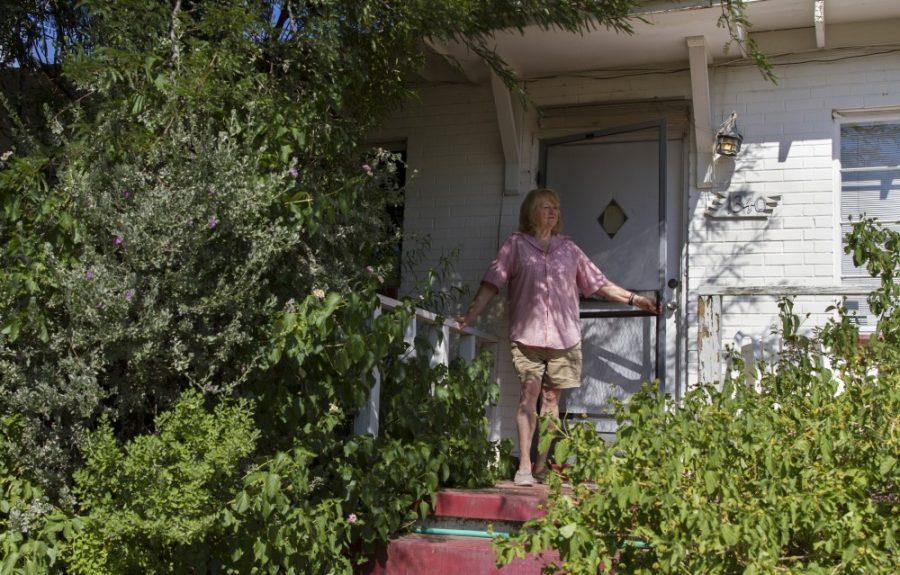While many University of Arizona students and faculty are excited for the Honors College to have a new home, neighbors immediately surrounding the proposed site of the honors village complex have mixed feelings about what the development means for their neighborhoods.
Originally planned to occupy one block, the new honors village will now sit on three square blocks at the intersection of Drachman Street and Fremont Avenue, just outside the UA planning boundary. The complex is set to include a 1,050-bed dorm, a recreation center, dining facilities and offices for honors faculty and staff.
“It’s no longer just a dorm for honors students,” said North University Neighborhood Association President Grace Rich. “It’s become a miniature city.”
Rich has lived in her house for 25 years and, since UA’s development had been established with planning boundaries, she had plans to retire there without worrying about the university’s expansion. Now, with the possibility of living across the street from the honors village, Rich said she will need to find another place to live. As a senior with chronic conditions, she said the construction process alone will be a problem for her.
“I rest during the day; I meditate during the day,” Rich said. “[With] the construction for a year and a half, which would be so noisy and so dusty, it would just be almost impossible to live here.”
RELATED: City Council looks to have greater involvement in honors complex development
In addition to the construction, Rich also expressed opposition to the way the university is developing outside its planning boundaries, saying it sets a precedent in which neighborhoods are not kept well-informed about expansion.
“The university could just come in … and take over property and work with the developer, even though they have agreements with neighborhoods that do not allow that,” Rich said.
Rich has been approached by the UA regarding an offer on her house, but she said the offers so far are not enough to cover her expenses. Rich said she is in negotiations with the university over both finances and conditions so that, after moving and repair costs, she can find a similar house in a similar neighborhood.
Much of the land that will become the honors village is owned by American Campus Communities, and according to Tucson City Councilman Steve Kozachik, there are plans to give the land to the university so that it becomes state property. After this happens, the honors village will not be subject to city zoning laws, impact fees or property taxes.
“It does concern me that the university would be moving forward in a project in the way that they are that will have impacts on their credibility and their trustworthiness throughout the community and most immediately surrounding campus,” Kozachik said.

To reach out to the broader neighborhood community, UA uses a Campus Community Relations Committee composed of representatives from UA’s Office of Community Relations, Tucson City Council and surrounding neighborhood associations. Kozachik said that, although the CCRC is an attempt by the university to communicate with the neighborhoods, what the university promises in these meetings is not legally binding the way they would be if the project went through the rezoning process.
“The university can walk into the CCRC meetings and say whatever they want, but they’re not bound by that,” Kozachik said. “In fact, they could go in and increase the size and the height of this once it becomes university property, and the city would have no voice in that decision.”
CCRC Chairwoman Alice Roe said that, at this point, the committee is working to make the project as palatable as possible for the people living close to it.
“The CCRC, the city, the UA and the neighborhoods have a lot to gain from working together,” Roe said.
RELATED: Campus Guide ’17: Honors College envisions future potential
Other neighbors, like Genevieve and John Sadlouskos, don’t mind living near the honors college.
“We’ve lived here 63 years; we raised five kids here,” Genevieve said. “Most of them attended the university. We’re happy with it and, like my husband says, it keeps us young.”
The Sadlouskoses live in one of the two private residences where the honors village parking lot will be built, Roe said. A strong screening wall will be built by the developers to separate the remaining residents from the parking lot. The alleyway behind the houses will also be kept open at the residents’ request.
Genevieve said the project plans change occasionally but added that they’re pleased with what the developers have planned for the area around her house. Running her finger over a map given to her by the university, she pointed out an annotated mock-up of the parking lot that will surround her house and occupy the entire block.
“We’re happy with that plan right there,” she said, “if they stick to it.”
According to UA Vice President for Communications Chris Sigurdson, the university continues to work with neighbors and is also working with the City of Tucson to address improvements on nearby streets and drainage in the area.
Follow Henry Carson on Twitter















